This article is reprinted from Zhongxu Smart Link
First of all, why talk about underlying logic? Everyone knows that the upper logic of smart feeding is the management visibility, prediction, and artificial intelligence learning brought by data indicators. So what kind of indicators are collected through what methods, and what are the logical standards for the collection of these indicators? Is the logic valid? What are the accuracy and standards during data collection?
In simple terms, for example: the change in a pig’s body temperature can provide different guidance for production. The significance is the upper comprehensive logic, while the middle logic is the method; by testing the rectal temperature with a thermometer to obtain a rectal temperature value, the standard of this thermometer is ±0.05 degrees. The underlying logic is the standard and rationality of the method; it is guided by the thermal expansion and contraction of mercury to determine the temperature standard. Taking the rectal temperature reflects the difference in variation directly, so the performance standards of mercury and the standards for changes in rectal temperature are the criteria for successfully establishing the underlying logic.
First, the scope of intelligent livestock equipment should refer to logical intelligence. This is the first underlying logic, called the standard of intelligence, which is the process of forming results through multidimensional logical judgment. When the equipment has the ability to analyze and compute multiple indicators, the more complex the process, the more reasonable the logic, and the more data support there is, the more accurate the guiding results will be, thus increasing the degree of intelligence.
Taking environmental control as an example: when the indoor temperature exceeds 25 degrees, four large fans are turned on; when the indoor temperature is between 22-24 degrees, two small fans are turned on, and the four large fans are turned off. This is easy to understand; this logic is one-dimensional, a switch logic, but not intelligent. It may lead to a situation where heating occurs in winter while the environmental control system cools down, and eventually everyone will switch to manual mode. Speaking of this, has the operator silently given a thumbs-up? To make it more reasonable, add an external temperature indicator—when the external temperature is below 20 degrees and the indoor temperature is above 25 degrees, two small fans are turned on; if it exceeds 27 degrees, one large fan and one small fan are turned on; when the external temperature exceeds 25 degrees and the indoor temperature exceeds 27 degrees, the water curtain opens, and all fans turn on. The external temperature serves as the switch logic, followed by the indoor temperature. This logic is a two-dimensional logic setting, which is obviously more reasonable and avoids the problem of heating while dissipating heat in winter. The addition of parameters such as humidity, ammonia, and carbon dioxide concentration in the environmental control logic is also beneficial for precise regulation, of course, it raises higher requirements for the probes that collect such parameters. The role and impact of these logics on production indicators have not yet seen a digital model domestically. The standards for digital transformation should also be derived to obtain the optimal production digital model, establishing the design and intelligent control logic for each functional barn. Of course, the hardware requirements for the controller’s computer processing capability are even higher, thus leading to higher costs. However, it is common in the country that the logical standards of environmental controllers exceed the number and accuracy of the collected hardware; especially in foreign countries, the logic of environmental controllers is complex and high-standard, but the accuracy of domestic collection equipment and execution is insufficient, resulting in most domestic systems using one-dimensional or two-dimensional logic, with three-dimensional logic being rare. Moreover, considering the importance of temperature collection points under different ventilation modes, different logical controls for “temperature” should be adopted. Of course, costs must be proportional to the degree of error; spending more than 40% of the cost to improve accuracy by 5% is not very reasonable, but spending 40% of the cost to improve accuracy by 40% is acceptable. Furthermore, one cannot use an erroneous result to judge a matter itself, so establishing the dimensions and rationality of the correct logic, as well as the accuracy of the collection methods, are all prerequisites for discussing costs.
Returning to the main topic, smart feeding is not just about precise feeding, so don’t confuse the concepts. What underlying logics are being discussed in smart feeding? Let’s look at what problems need to be solved by intelligent logic and where the thresholds are.
The first parameter setting should be the feed intake, while the equipment executes the feeding amount, thus there is a gap between the two quantities, leading to feed waste. Excessive feeding can also cause untimely feed cleaning, leading to spoilage and harm. For large-scale farms, refined management still requires equipment execution.
The second parameter setting is the feeding time, while the equipment executes the feeding time. The feeding time of pigs, except for controlled feeding behavior, can be agreed upon; if they feed naturally, there will be a noticeable regularity within the 24 hours of a day, especially for nursing sows (our company has established its own digital model through experiments with hundreds of thousands of samples over five years).
The third parameter setting is the curve for different categories of pigs at different ages. The feeding curves for fattening pigs, pregnant sows, and nursing sows at different ages often resemble linear values calculated by an equation.
In summary, smart feeding is based on the category of pigs, age, ideal feeding curve corresponding to the total daily feeding amount, and daily meal ratio, establishing precise feeding under a digital model to avoid feed waste and improve feed conversion rates.
The middle logic is about the feeding amount, feed intake, whether leftovers are cleared, and collecting pig feeding signals, etc.
The underlying logic is the accuracy of the feeding amount, whether feed is dispensed when empty, and the difference between feed intake and dispensing amount is determined by whether it has been cleared. If cleared, the feeding amount is the same as the intake amount. What standards are used to judge the feeding signal? Is the feeding curve data model ratio accurate? How stable is the ratio of wet feed to water, and how is it monitored?
Based on this goal, we first break down the production tasks to obtain the logical dimension requirements and equipment parameter settings. Next, we will use a difficulty star rating to represent the functional requirements of smart feeding in different production areas and discuss the value reflected in the standards of devices on the market.
1. (★★) Mating Barn, currently the most common “precise feeding” equipment domestically and internationally, is also the earliest product imported into the country. The main feeding behavior of sows in the mating barn is limited feeding, with only two meals a day, requiring little feeding amount and few meals, so timed and quantized feeding is sufficient. Both dry and wet feed can be used, and the equipment only needs to execute two timed feedings, so the computer system is simple, and the dispensing is accurate. Compared to traditional mechanical limited feeding cups, the data is more accurate, almost linear, and has little reference value. The execution target is the data target. The one-star difficulty (★) standard is timed and quantized dispensing, while the two-star difficulty (★★) standard is the ability to detect empty bins and control the internet to open, close, and adjust the feeding curve. Prices range from 300 to 1200, with varying accuracy and networking methods; the more expensive ones are imported. However, our company believes that such products have too few dimensions to be considered smart feeding, only being time and quantity feeding.
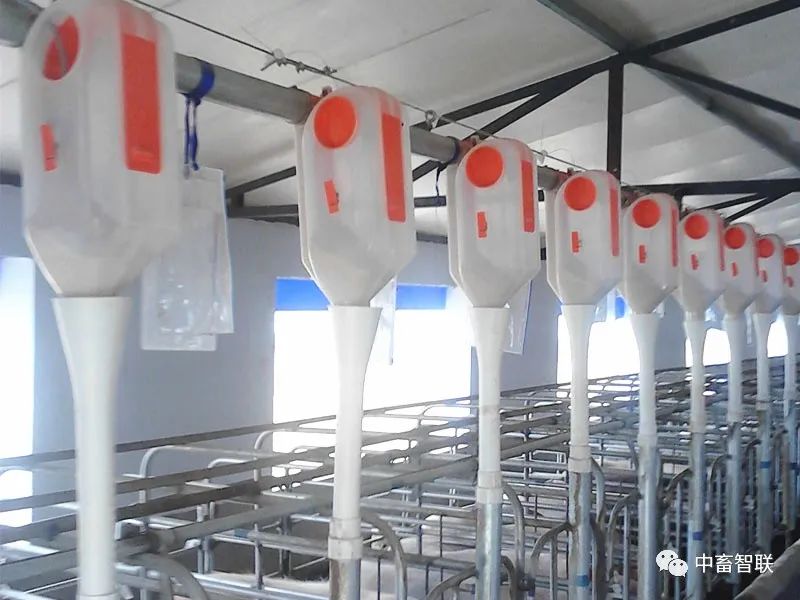
Traditional Mating Barn Limited Feeding Cup
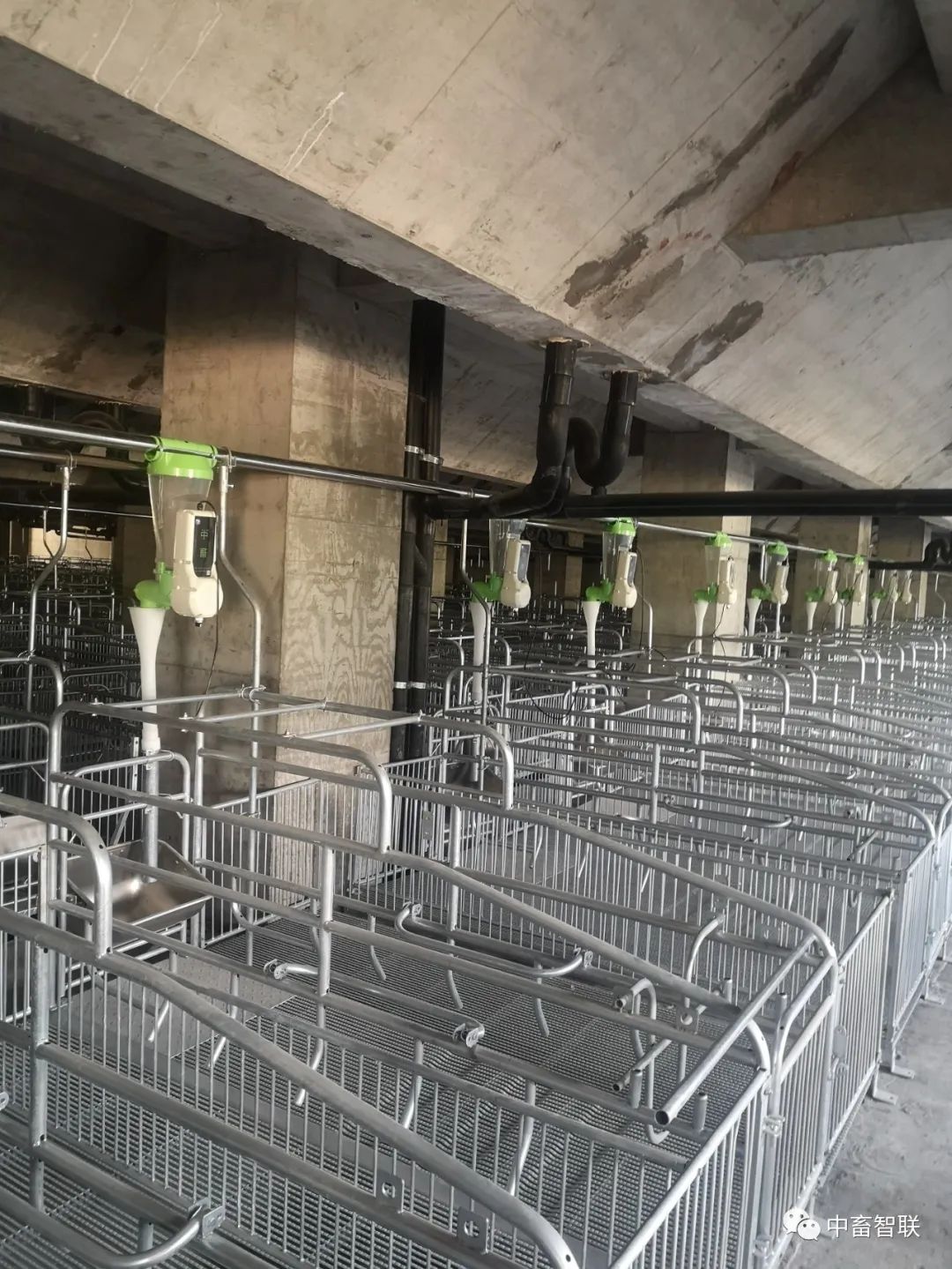
Zhongxu Internet Version Mating Barn Product
2. (★★★★) Farrowing Barn, differentiating between dry and wet feed, with a one-star difficulty (★) for the first-dimensional logic feeding curve setting. Prepartum feeding remains at two meals a day, while postpartum the curve increases to allow for free feeding after 5-7 days, thus the feeding curve has an equation logic. The two-star difficulty (★★) is for setting the daily meal ratio in the feeding curve, while the three-star difficulty (★★★) is for interactive feeding, with trigger logic, limit rods, and feeding time. (★★★★) Wet feed, stable water feed ratio, and no cleaning design; these two functional difficulties pose high challenges for domestic and foreign equipment standards. Currently, there are not many manufacturers with perfected products; dry feed is sold between 1600-3500, while wet feed is sold between 2200-4000. Additionally, sows have strong destructive power, requiring high standards for the triggering devices of the equipment, and the value of internet data collection is high (feeding efficiency, respiratory health, reflected through on-site experience, and daily water waste savings of approximately 6-20 kilograms per pig). There are many methods to increase the feeding amount of sows, with slurry feed being the most direct way, while also reducing constipation and summer heat stress.
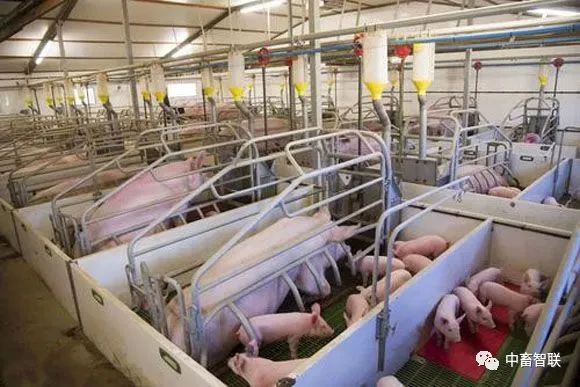
Traditional Farrowing Barn Limited Feeding Cup
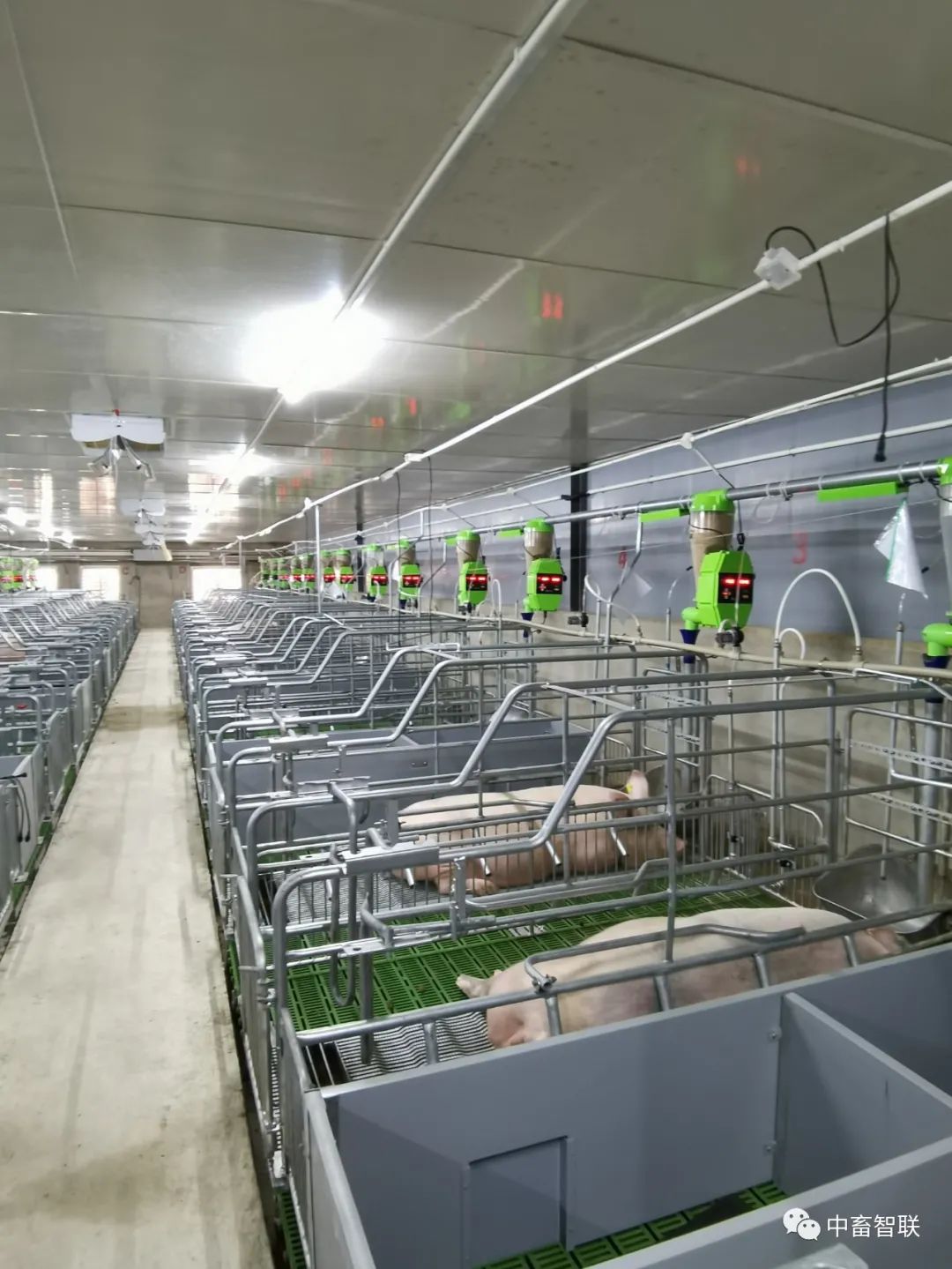
Zhongxu Pig Sister 4S Intelligent Slurry Feeding Machine for Nursing Sows
3. (★★★★) Nursery Barn, mainly wet feed (★), interactive triggering devices (★★), stable water feed ratio (★★★), no cleaning design (★★★★). The difference between nursery and fattening lies in that both pellet and powder feed can be used, and the feeding device requirements include a water feed ratio below 2.0, interactive feeding, and the feeding curve is adjusted with age. The equipment has lower impact resistance requirements and is currently abundant on the market, with prices ranging from 1800-3000, with the main cost being the complexity of the computer control logic and material costs, and data collection being valuable. There have long been methods for manually mixing slurry feed during the nursery phase, so intelligent slurry feeding solves the labor problem and is a high return on investment method.

Traditional Stainless Steel Feed Trough
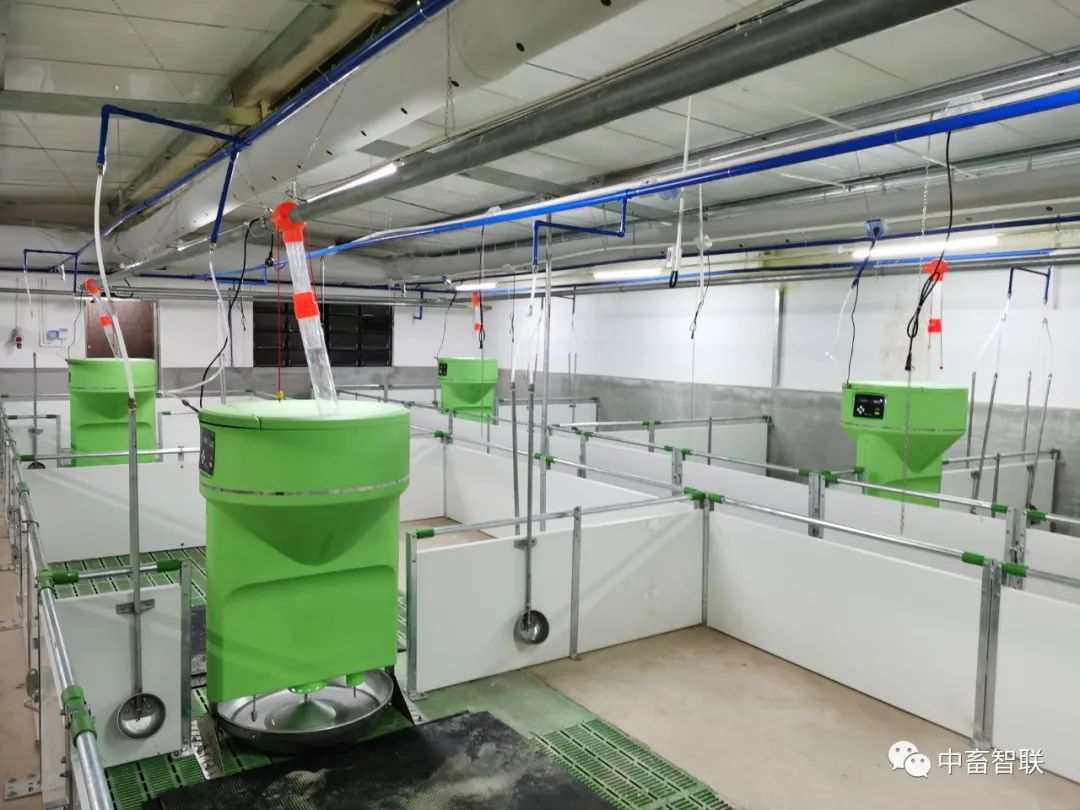
Zhongxu Pig Brother Liang 2S Integrated Intelligent Slurry Feeding Machine for Nursery and Fattening
4. (★★★★★★) Fattening Barn, mainly wet feed (★), interactive triggering devices (★★), stable water feed ratio (★★★), no cleaning design (★★★★), waterproof and impact-resistant (★★★★★), annual failure rate <1% (★★★★★★). The integrated slurry feeding machine for nursery and fattening has a main cost in the complexity of computer control logic, free feeding, no cleaning logic, and limiting dispensing and water logic, with prices ranging from 3000 to 4680, and data collection is valuable. Currently, there are very few mature products, with a basic failure rate of over 10%, unstable water feed ratio, and slurry not being slurry, with large data errors and low longevity. Such products do not exist abroad; they are replaced by dry-wet feed troughs and liquid feed tanks, which require domestication for feeding use. Liquid feed tanks belong to timed and quantized feeding. The most commonly used domestic stainless steel feed trough allows for 24-hour free feeding, but the problem is that the process of fattening pigs eating dry feed is accompanied by continuous drinking to relieve the dryness of the dry feed, wasting time on both water and feed. Additionally, the phenomenon of powder feed accumulation during the transportation of pellet feed needs manual cleaning; otherwise, pigs may not like to eat powder feed and will continue to eat the pellets on top, leading to powder feed accumulation and spoilage, affecting health. At the same time, the causes of respiratory issues arise, and dust is also a manifestation of feed waste. Comprehensive comparison results show that using slurry feed improves production performance, allows for early market release, enhances feed conversion rates, reduces waste, and saves over 30% on future wastewater treatment costs, among many other excellent performances. However, due to the large number of fattening pigs, the requirements for such sensitive equipment in computer control are precise and durable, which presents a relatively contradictory design philosophy. Thus, the required structure must be more reasonable, and the materials must meet higher standards so that the computer control logic can be fully expressed.
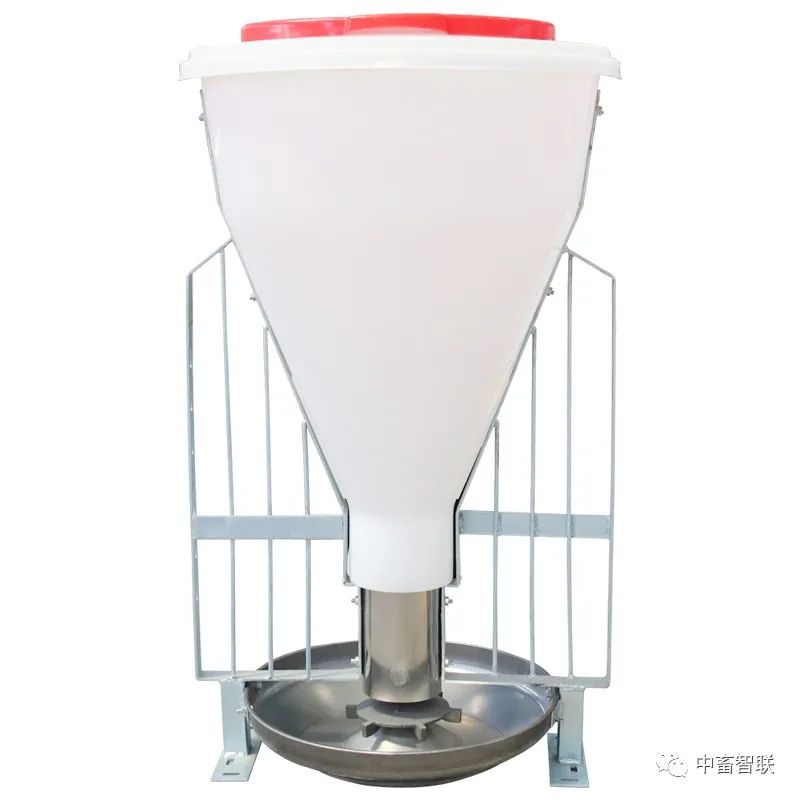
Competitor Products

Zhongxu Pig Brother Liang 2S Integrated Intelligent Slurry Feeding Machine
Our company has independently developed the Zhongxu Intelligent Slurry Feeding Machine with an overall failure rate of <1% over five years, including the early product iteration period. Currently, the product’s stability is higher, and in the past two years, the failure rate has been less than 0.5%. The data accuracy has reached an error of less than 2%, with excellent products such as the nursing sow Pig Sister 4S and the nursery fattening Pig Brother Liang 2S pellet slurry feeding machine, led by PhD experts from the automotive industry and professors from the military industry. Large-scale breeding groups continuously purchase as proof. The investment in R&D time and costs for the intelligent slurry feeding machine is the highest in the industry. The product’s vitality lies in its low failure rate and implementation capability, achieving a reasonable input-output ratio, providing a foundation for the next step in the digital transformation of breeding—real data. Using data to establish standard breeding models, and more importantly, using standard models to find the basis for precise management. The intelligent application of the intelligent slurry feeding machine is still under development and optimization. A device that interacts with pigs daily is certainly the place with the most data. Now, installing the Zhongxu Intelligent Slurry Feeding Machine in your pig farm is to equip the best hardware facilities for future digital transformation applications in advance, with functional upgrades keeping pace with returns. More patent information can be found in our company’s patent section. The company adheres to the value of saying, doing, and seeing, maintaining a sincere attitude towards customers and peers, and welcomes communication and sharing of experiences.